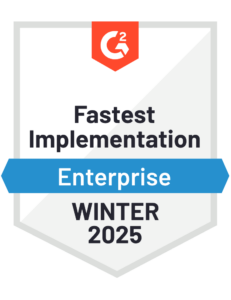The Risks of Manual Account Reconciliations in the Banking Industry
Blog post
Share
Risk management in the banking industry is constantly evolving; the continuous updates and regulations that emerge over just a short period of time are difficult to keep up with when utilizing manual account reconciliations. In order to remain compliant and stay ahead of regulations, financial institutions need to have an effective risk management strategy in place. To be successful, banking organizations must start rebuilding their risk functions and optimize them for short- and long-term initiatives.
Utilizing manual methods of reconciliation not only greatly increases risk factors and the chance of non-compliance for banking operations, but also expose banking operations to potential consequences in the future. The move from manual to automated reconciliation is critical in order for banking organizations to overcome the shortcomings of their current financial close process and successfully prepare their employees for the future.
Risk Factor #1: Errors and Miscalculations When Reconciling
Banks handle a constant influx and a high volume of transactions flowing into and out of the organization, such as debit, credit, ACH, check, cash, online, 3rd-party, and mobile payments. No matter the type, each transaction needs to be accurately reconciled and the entire account reconciliation process needs to be tracked on a daily basis.
Due to the continuous stream of transactions, tremendous pressure is put on a bank’s back-office accounting operations in order to keep up with the reconciliations. In an effort to keep pace with transactions, it can be easy to incorrectly input or adjust financial data when working with thousands of figures. Human error is inevitable when reconciling in spreadsheets and binders.
How Financial Automation Solves Account Reconciliation Errors
With financial automation, the software utilizes custom matching rules developed by your specific organization to automatically reconcile accounts. Transactions and accounts that contain inconsistencies or miscalculations are immediately flagged and the highlighted exceptions are brought to the accountant’s attention to resolve. Rather than spending several hours each close period ensuring all transactions are up-to-date and accurate, financial automation software speeds up the matching process by accurately matching and flagging according to your organization’s rules. This enables accountants to prioritize high-risk accounts, investigate— and eventually prevent— exceptions.
Over time, accounting teams will see a reduction in errors and an increase in matching rates. Accurate reporting of all figures ultimately prevents non-compliance and fraud further in the financial close process. Not only that but letting financial automation software bear the brunt of the transaction matching process allows your team to focus on strategic activities to further reduce your compliance risk, such as testing and refining financial controls or creating data insights to pinpoint the greatest risk factors in the financial close.
Risk Factor #2: Decentralized Spreadsheets and Documents
When multiple departments within financial institutions are expected to perform their own reconciliations, it can be difficult to track and verify each transaction that comes in and out of the bank. Without a unified solution in place, documents and spreadsheets are shared amongst numerous employees and departments through emails and other communication tools, where they might be easily lost or get the document versions confused. Relying on manual methods such as spreadsheets and binders makes financial data impossible to accurately track. Any adjustments or changes made in documents or on paper is not only difficult to pinpoint but can easily result in hidden fraudulent transactions.
How Financial Automation Solves Scattered Spreadsheets
Keeping all pertinent documents in a centralized location enables accountants and financial leaders to remain updated on the close while ensuring all financial data is accurate and accessible. Rather than sending over last-minute changes to spreadsheets to other team members during the period-end close, changes can be made directly from the attachments within the financial automation software. An easy-to-track solution means all financial leaders can supervise the completion of any and all accounting activities.
“We no longer have to use binders to archive our financial data because the solution archives everything electronically. It has also simplified our working routines due to the different permission levels that the solution offers.”- Toyota Financial Services
Risk Factor #3: Inability to Standardize Spreadsheets
In addition to a decentralized process, the lack of standardization across accounting teams can lengthen the financial close process. When accountants resort to using personal layouts for completing balance sheet reconciliations, those specific layouts cause bottlenecks and errors to occur within the period-end close. Rather than prioritizing long-term strategic initiatives, financial personnel is focused on decoding differing layouts across several team members and thousands of spreadsheets.
How Financial Automation Software Standardizes Documents
Tracking different versions of spreadsheets can be challenging on its own, especially when tasked with impending deadlines. Having a cloud-based financial automation solution in place enables all accounting personnel to gain access to a layout that is standardized and consistent. Rather than spending valuable time decoding thousands of documents within the period-end close, accountants can breathe knowing that financial automation software will quickly interpret the financial data.
Risk Factor #4: Lack of Organizational Visibility in the Close
Tracking current progress into the financial close is essential for every banking organization. Without real-time updates, accounting managers may find it difficult to navigate how quickly their employees are completing the reconciliation process in addition to the overall financial close. Spreadsheets and binders lack the ability to track progress and assess productivity, which further delays the turnaround of the financial close.
“There’s never enough transparency. But we’re changing that with Trintech’s solutions. They offer us real-time visibility into these activities that we just didn’t have before.” – Western & Southern Financial
How Financial Automation Software Boosts Visibility
An automated reconciliation solution combined with task management software provides short- and long-term visibility into the reconciliation process. When financial reporting comes into play, managers can glance at real-time updates into the accounting team and gather insight into the financial close. In instances where some accountants have a heavier workload than others, organizational visibility enables managers to reassign and delegate excess tasks as needed. This not only eliminates bottlenecks but also creates a more balanced and less stressful workflow for everyone involved.
Risk Factor #5: Strict Compliance Standards
In an industry where regulations are evolving and constantly updating, financial institutions can be hard-pressed to make sure all figures and transactions are precise and correct. While those regulations are put in place for a good reason, they can often extend the turnaround for the completion of the financial close. With an automated reconciliation solution, accountants can drastically reduce the time spent on the financial close, enabling accountants to comply with strict compliance standards and other regulatory bodies and ensure accurate reporting on all fronts.
How Financial Automation Software Benefits the Organization
Financial automation software enforces workflow standardization and procedures across different entities, so a close process in one entity is being performed the same as a close process in a different entity. Once the financial close is completed, an activity log is produced to keep external auditors up to date on every change, comment, or task that is created within the software. An audit trail provides both internal and external auditors the access they need to ensure every action performed complies with standards and procedures.
There’s no doubt that financial automation can provide banking organizations with many benefits and opportunities, especially within the account reconciliation process. With a financial automation solution in place, banking institutions can enhance their accounting workflow, boost their return on investment, streamline financial reporting, and reduce the overall risk.
In today’s banking industry, there continues to be a steady uptick in instances of financial risk that can impact both financial institutions and their customers. Discover why leading organizations in the banking industry trust Trintech for a more efficient financial close.






